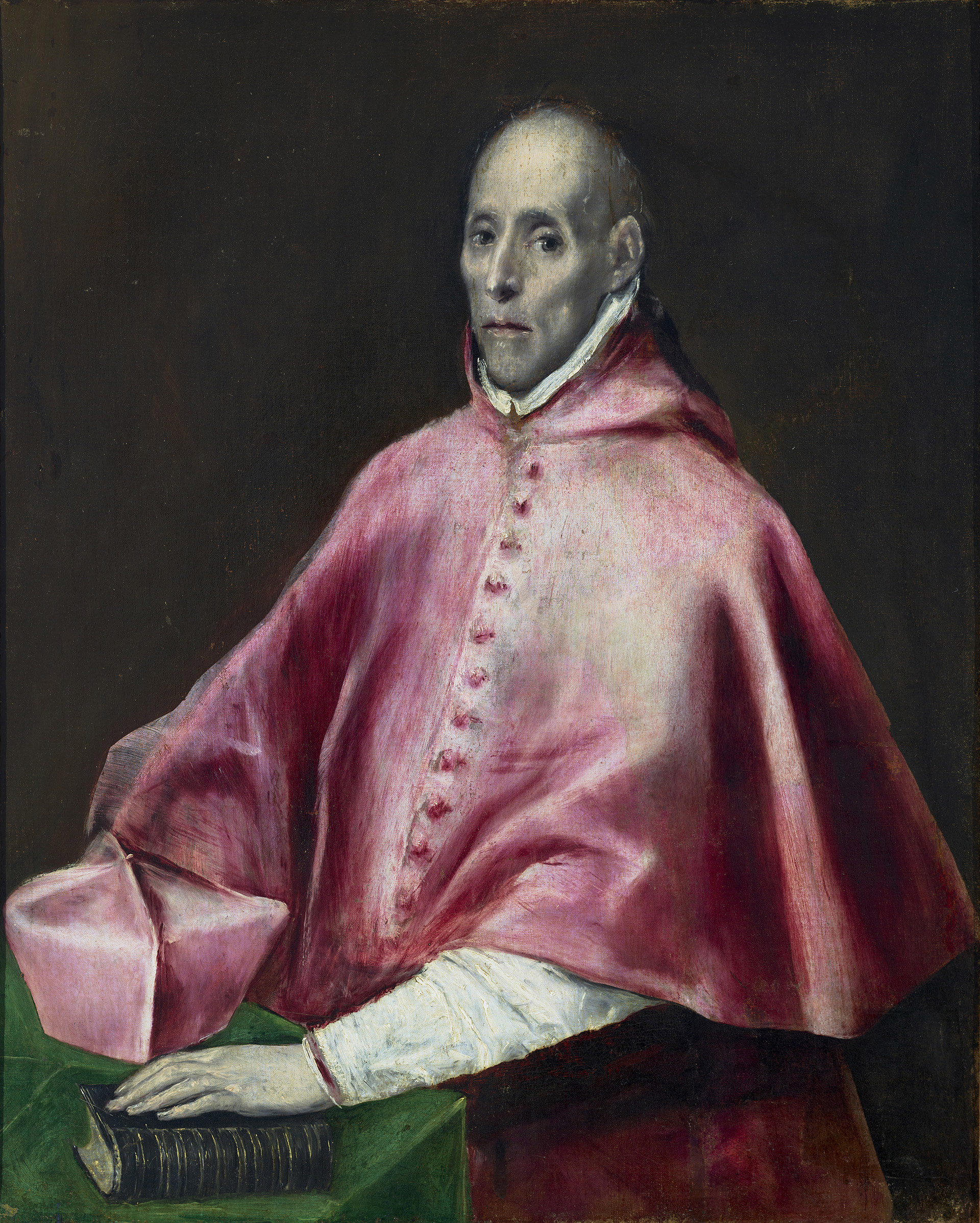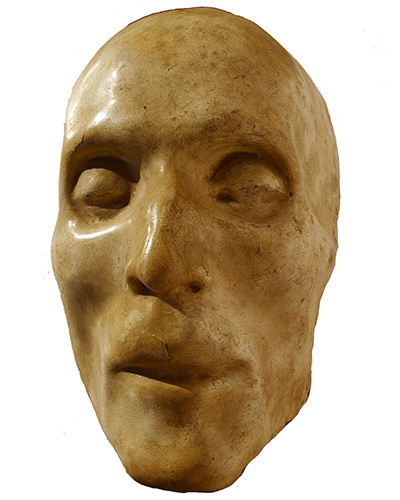De los cinco lienzos del cretense, probables encargos de su amigo el rector don Pedro Salazar de Mendoza o parte de los bienes que le fueron embargados a Jorge Manuel Theotocópuli por el Hospital de San Juan Bautista a causa del pleito establecido por la obra de los retablos, destaca en primer lugar el retrato del fundador de dicha institución, arzobispo de Toledo y cardenal del título de San Juan ante Portam Latinam, gobernador del reino castellano en ausencia del emperador Carlos V, presidente del Consejo de Castilla e inquisidor general, el Cardenal Juan Pardo de Tavera (1472-1545), originalmente firmado pero cuyos caracteres griegos minúsculos desaparecieron de su ángulo inferior derecho debido a un parcial deterioro del lienzo.
Procedente de la Capilla hospitalaria, de cuyos muros colgaba, muy probablemente fue sacado a partir tanto de la mascarilla funeraria que se conserva en la Sala del Archivo,, como de la fisonomía del retrato atribuido a Alonso Berruguete a partir de las afirmaciones de Salazar de Mendoza; éste poseía al morir en 1629 en sus habitaciones rectorales del propio hospital, un retrato del cardenal, “en lo alto de la casa”, colgado entre otros retratos, imágenes de devoción y mapas; no obstante, la imagen grabada por Pedro Ángel y publicada en su obra histórico-biográfica titulada Chrónico de el Cardenal don Ioan de Tavera (Toledo, 1603), parece derivar más del retrato berruguetesco, ahora revestido de cardenal, que del más moderno del cretense, al que la crítica ha otorgado siempre una fecha tardía, posterior a 1608, vinculada a la cronología del encargo de los retablos.
Si en este retrato aparecía don Juan tocado con un bonete púrpura, vestido con un roquete blanco y leyendo ensimismado en un breviario que apoyaba en el capelo cardenalicio, la figura del Greco –y a pesar de su aire demacrado- nos contempla sentada desde detrás de una mesa, en la que reposan la mano izquierda, un bonete y un grueso libro encuadernado y de título ilegible, de más de medio cuerpo y revestido con su vestimenta de cardenal. A través de estos recursos compositivos, el color y la viveza de la pincelada, el candiota logra una imagen de gran inmediatez y presencia física y psicológica. A pesar del eco de retratos como el de de Paulo III y sus sobrinos Alessandro y Ottavio Farnese (1546) de Tiziano (del Museo de Capodimonte de Nápoles), la composición se aproxima más a la tipología de las imágenes de San Jerónimo en su estudio, que tantas veces frecuentó el candiota.
Fernando Marías, febrero 2009




